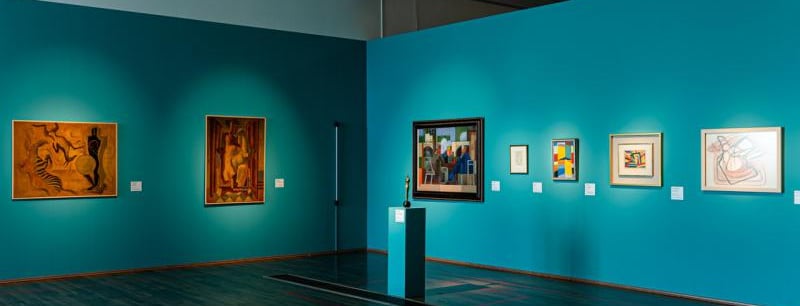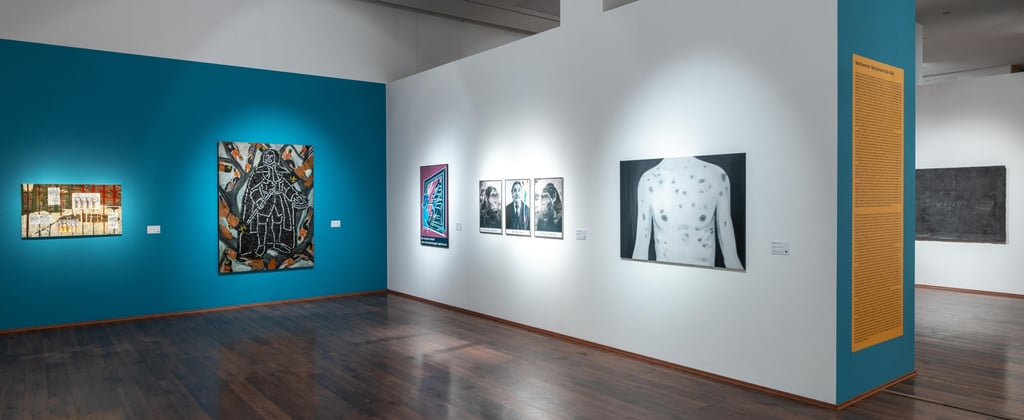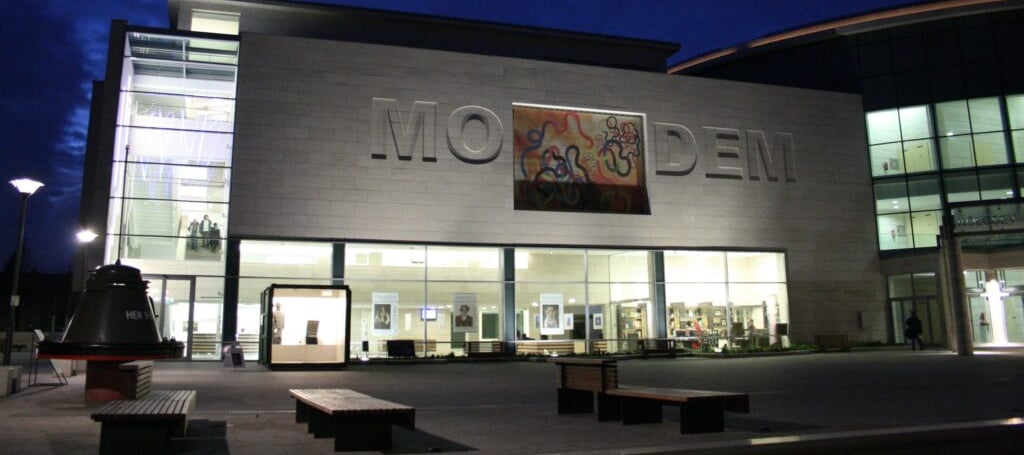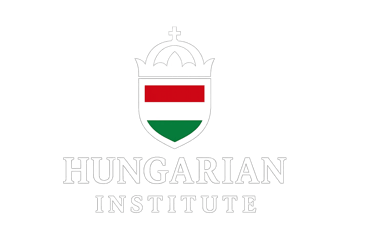MODEM Centre for Modern and Contemporary Arts – Debrecen’s Cultural Lighthouse
Where canvas, light, and idea converge in Hungary’s eastern heartland


A Museum that Breathes with the Century
In the historic heart of Debrecen, the MODEM Centre for Modern and Contemporary Arts rises like a whisper of the future against the city’s classical skyline. It is not just a building, not merely a museum. It is a living organism of creative energy — a portal where brushstrokes converse with pixels, where sculpture defies gravity, and where silence often says more than noise ever could.
Since its opening in 2006, MODEM (short for Modern és Kortárs Művészeti Központ) has stood not merely as a showcase, but as a sanctuary for Hungarian and international artists who dare to redefine form, color, and idea. Nestled beside Debrecen’s grand Reformed Great Church, MODEM is the largest exhibition space dedicated to contemporary art outside the capital, and perhaps the most intellectually ambitious.
Its architecture, stark yet embracing, is composed of confident lines and large glass panels that invite the city inside — a metaphor made manifest. This is not a place of passivity; here, the viewer participates. Light floods through the structure, bending around canvases and installations, creating a dialogue between interior and exterior, between artwork and observer.
The Philosophy of Now
Unlike many art institutions bound by retrospection, MODEM gazes firmly ahead. Its curatorial vision is rooted in the present tense, but always aware of the historic continuum. In every exhibition, MODEM asks: What does it mean to make art today? What does it mean to be seen, to be felt, to provoke thought?
The exhibitions often move beyond aesthetic appreciation to question politics, ecology, technology, and identity. Whether it’s a retrospective of a Hungarian master of conceptual art or a provocative multimedia installation by a rising European collective, the museum acts as both mirror and oracle — reflecting the fractured surface of the now, and hinting at what lies beneath.
MODEM’s strength lies in its ability to blur boundaries: between national and international, between tradition and experiment, between gallery and street. It draws artists from Poland, Germany, Japan, and beyond, even while championing the cultural voice of Hungary’s own talent. It is a stage and a laboratory, a forum and a fortress.
Not Just a Museum — A Cultural Generator
To enter MODEM is to enter a space in motion. This is not a static collection; there is no permanent exhibition. The museum’s soul lies in transformation. Installations are born, grow, evolve, and vanish like the shifting seasons of an intellectual landscape.
Some past exhibitions have included:
“The Sound of Silence”, a meditative exploration of sound art, where empty rooms echoed with the ghosts of music and language.
“Human/Nature”, which juxtaposed organic forms with digital manipulation, asking whether the wild can survive the algorithm.
“Eastern Pulse”, a celebration of Central and Eastern European artists who navigate memory, trauma, and resilience in the post-Communist world.
MODEM is a meeting place — not only for art and audience but also for creators and communities. Through lectures, screenings, performances, and educational workshops, it becomes a civic forum. Here, children paint their first abstractions beside art historians. Here, high schoolers debate gender and graffiti. Here, retirees learn the logic of installation art. The past and future lean into each other.
Debrecen: An Unlikely Capital of Contemporary Vision
One might expect such a space in Budapest — cosmopolitan, crowded, culturally dense. But it is precisely in Debrecen, Hungary’s “calm capital,” that MODEM finds its unique gravity. The city’s dual nature — Protestant and poetic, provincial and global — is echoed in the institution’s curatorial choices.
Debrecen is a place of ideas, and MODEM is its pulse. Just as the city’s university fills its libraries with philosophy and physics, MODEM fills its halls with visual provocations. It is the eastern gate of Hungary’s cultural corridor — a space where East meets West not in collision, but in conversation.
And this is essential. In a world that races ever faster, MODEM offers a kind of stillness, a place to contemplate what it means to make meaning. It’s a space where ambiguity is not feared but fostered. Where questions outrank answers.
Architecture as Invitation
The building itself is a marvel of quiet design. Designed by architect Péter Bordás, the 3,000 square meter space was conceived not merely as a container for art but as an artwork in its own right. With its sleek facade, rhythmic use of natural light, and flexible interior walls, the space adapts to each exhibition like a second skin.
There are three main levels: the lower floor often hosts immersive installations and larger-scale events; the main floor houses the bulk of the exhibitions; and the upper gallery provides sweeping views of the space below, enhancing the interplay between spectator and spectacle.
The materials — glass, steel, light-colored stone — speak a visual Esperanto. They neither dominate nor withdraw. Instead, they allow the artworks to breathe, to whisper, to shout.
A Museum that Listens
Perhaps MODEM’s greatest virtue is that it does not pretend to speak with authority. It listens — to artists, to visitors, to the city itself. The curatorial voice is bold but not dogmatic. It says: come in, explore, decide for yourself. Here, every viewer is an interpreter, every reaction valid, every pause an act of engagement.
In recent years, MODEM has increasingly turned toward participatory and interactive art. One might find rooms where visitors are invited to write, to draw, to speak. The border between audience and artwork dissolves. The visitor becomes co-creator.
This sense of openness extends to the international partnerships MODEM forges. Through collaborations with institutions in Berlin, Prague, Vienna, and Tokyo, the museum brings global trends to Hungary — not to imitate, but to converse.


The Community Within the Canvas
MODEM is not just for the art world’s elite or the intellectual vanguard. It is also a center of community — deeply embedded in the cultural identity of Debrecen. Local artists, students, teachers, and curious minds pass through its doors daily, drawn not only by the art but by a sense of belonging.
The MODEM Bookshop offers thoughtfully curated titles on contemporary theory, visual culture, and design, often in multiple languages. The café is not just a place to sip espresso; it is a salon, a place where overheard conversations oscillate between Kierkegaard and Kandinsky.
Moreover, MODEM’s relationship with the University of Debrecen and various civic initiatives ensures that it stays relevant to the city it inhabits. It partners with festivals, educational campaigns, and public events, often spilling out onto Baltazár Dezső Square, transforming urban space into temporary galleries.
In every sense, MODEM is a democratic space — aesthetically daring yet publicly grounded.
Art for All Ages
One of the institution’s most vital undertakings is education. Its programs for children, adolescents, and educators are robust, imaginative, and inclusive. Children’s workshops transform the gallery into a wonderland of texture and experimentation, while guided tours for schools frame complex ideas in accessible terms.
For university students, MODEM offers internships, guided study programs, and open lectures with renowned Hungarian and international thinkers. There is even an initiative that integrates local high school students into the curatorial process, letting young minds help design parts of exhibitions.
This investment in future generations is not incidental. It is philosophical. MODEM believes that art should not be a luxury but a lens — and everyone should be taught how to see.
Events and Festivals
Throughout the year, MODEM organizes and participates in a spectrum of cultural events. From performance art evenings to film screenings and from public debates to international symposiums, the museum is in constant motion.
Special annual events include:
Debreceni Tavaszi Fesztivál (Debrecen Spring Festival): MODEM curates site-specific exhibitions, dance pieces, and collaborations with music academies.
Múzeumok Éjszakája (Night of the Museums): A beloved nocturnal program with guided flashlight tours, live art creation, and jazz ensembles in the courtyard.
Autumn Contemporary: A season-spanning showcase of Hungarian and regional contemporary artists with themed group shows and accompanying lecture series.
Each event not only draws locals but also brings in visitors from Budapest and beyond, gradually establishing Debrecen as a serious destination for contemporary culture.
The Future Unfolds Here
What does tomorrow hold for MODEM? Its programming continues to push boundaries — engaging with topics like AI-generated art, eco-activist installations, and new media expressions. Plans for greater digital presence and hybrid exhibitions that can be experienced both physically and online suggest that the center is evolving with the times.
There are ambitions to expand its residency programs and artist exchanges, particularly with artists from Central and Eastern Europe, the Balkans, and the Caucasus. As Hungary’s cultural geography changes, MODEM positions itself not as a follower but as a cartographer — mapping what art can mean in our complex era.


Visiting Information
Location:
MODEM Centre for Modern and Contemporary Arts
Baltazár Dezső tér 1,
4026 Debrecen, Hungary
Opening Hours:
Monday: Closed
Tuesday–Sunday: 10:00 – 18:00
(Last admission: 17:30)
Ticket Prices:
Adults: 2,000 HUF
Students and Seniors: 1,200 HUF
Children under 6: Free
Family ticket (2 adults + 2 children): 4,000 HUF
Special rates for groups and school visits
Guided Tours and Educational Programs:
Available in Hungarian and English. Reservations recommended in advance via email or the official website.
Accessibility:
The building is fully wheelchair accessible. Audio guides and tactile tours for visually impaired visitors can be arranged with prior notice.
Contact:
Phone: +36 52 525 018
Email: info@modemart.hu
How to Get There:
MODEM is centrally located, just a 5-minute walk from the Debrecen Main Square and easily accessible by tram (Line 1) or local bus services. Parking is available nearby.
Official Website:
www.modemart.hu
Social Media:
Facebook – @modemart
Instagram – @modem_debrecen
YouTube – MODEM Debrecen








